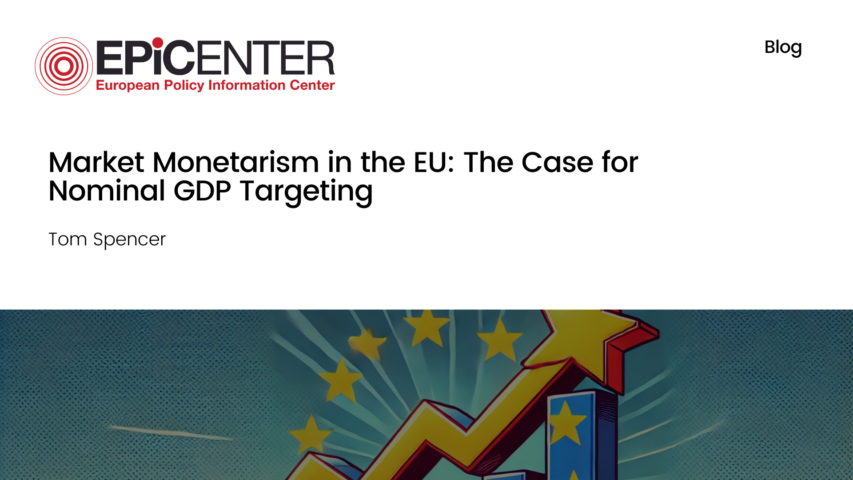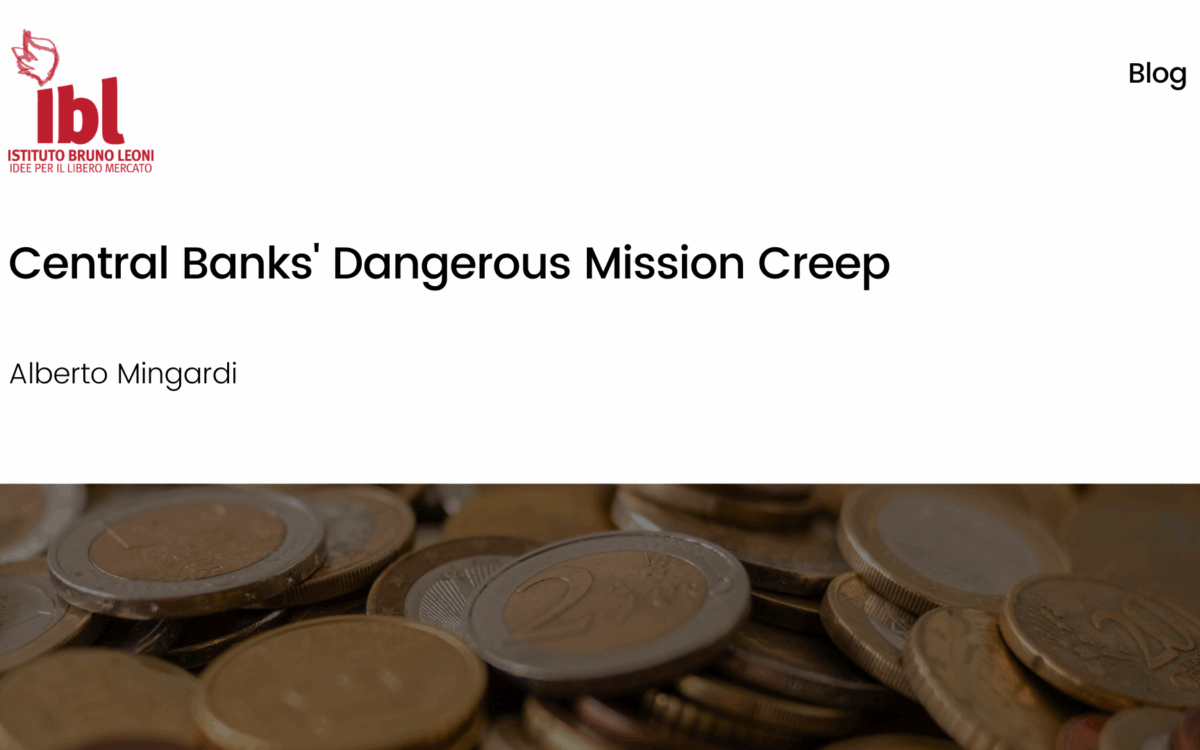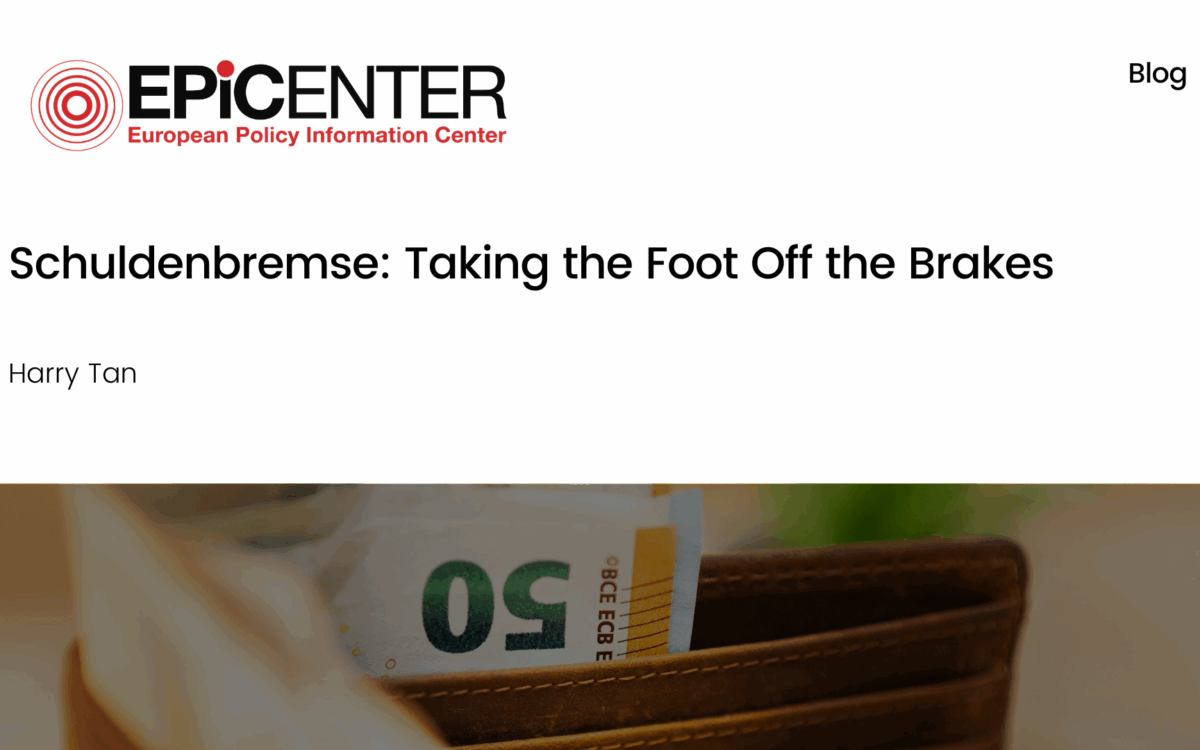Market Monetarism in the EU: The Case for Nominal GDP Targeting

Market Monetarism in the EU: the Case for Nominal GDP Targeting
Tom Spencer // 7 April 2021
Monetary policy could become a problem for the Eurozone as we recover from the pandemic. Given the huge increases in the volatility of money, once demand picks up one can expect inflation to rise. This is not necessarily a bad thing in the short run. Rising prices signal higher levels of demand, and thus confidence in the economy. However, with its strict target of 2% inflation, the European Central Bank could act as a barrier to our recovery leading to higher than necessary levels of unemployment. Instead, the ECB must switch its mandate to target nominal gross domestic product (NGDP).
Inflation targeting – where central banks target a specific rate of inflation – is still a very new phenomenon in central banking, but it does come with its benefits. It took away the incentive for politicians to adjust interest rates for political purposes, helping to stabilise economies. Furthermore, it is highly effective in allowing bankers to communicate to the public, given it is very simple and easy to understand.
However, a risk that comes with inflation targeting is that central bankers can be prone to react to short term swings in the price level instead of the medium-term actual rate of inflation. Events like oil shocks often lead to a higher rate of inflation in the short term, but do not require central bank intervention as they do not cause medium term inflation. To get round this problem they use a device called the Taylor Rule. This looks at both the gap between targeted inflation rate and actual inflation rate, as well as the gap between actual and natural levels of output. From this, central bankers can calculate what is the best policy prescription at any given time.
In a world of perfect knowledge this would be ideal, but the output gap is notoriously difficult to calculate leaving central bankers vulnerable to mistakes. A 2019 paper in the Journal of Money, Credit and Banking found that 13% of fluctuations in the output gap are due to mistaken forecasting by the Fed. By using the NGDP Gap – the level at which NGDP growth is neither inflation or deflationary, central banks can make more accurate forecasts, as this is less vulnerable to the knowledge problem and therefore helps prevent instability. For example, Huiying Chen, Assistant Professor of Economics at the University of Central Oklahoma, has found that this could help reduce volatility in output, consumption and inflation by as much as 25%.
NGDP targeting would be especially important in a time of economic downfall. When we say we’re in a recession, we’re actually saying we’ve seen a significant fall in NGDP. This is problematic because wages are sticky, meaning when companies’ profits fall, wages do not – resulting in companies being forced to lay off staff causing unemployment. The only way we can correct this is by creating a rise in NGDP directly. Therefore, it makes sense to target the principal cause of economic woe, a negative NGDP gap, rather than the secondary issue of inflation.
This is illustrated by the ECB’s reaction to the global financial crisis. During the spring of 2011, a spike in oil prices occurred causing a rise in inflation. Here, the ECB feared inflation rising too high and so increased interest rates. The US was prepared to take on a bit more inflation and kept interest rates the same. Whilst the US successfully came out of the crisis with NGDP rising at ~4% each year, the Eurozone’s recovery was stunted. This contributed to a growing debt crisis and decimated some of the less developed economies in the bloc.
Understandably many people look at the stagflation of the 1970s and worry about the inflationary risks of implementing NGDP targeting. This comes with some large drawbacks such as higher menu costs and reduced purchasing power. However, by preventing inflation you lessen the effectiveness of any recovery. Moreover, as George Selgin pointed out, during a productivity boom NGDP targeting would actually tighten monetary policy helping to prevent bubbles from rising.
If the EU wishes to experience long-term stable markets and cope better during times of crisis, then it should adopt a new mandate. NGDP targeting is less vulnerable to calculation issues, and so would provide consistently better results for Europeans. The demand for this policy is more pertinent than ever. With the negative NGDP gap still sizable, but inflation looking round the corner, monetary policy could do a lot of harm to Europeans if it is not used properly. If the EU is not careful they will repeat the errors of the Global Financial Crisis. If the EU are truly committed to building back better, then they must look to reforming monetary policy through the adoption of NGDP targeting.
EPICENTER publications and contributions from our member think tanks are designed to promote the discussion of economic issues and the role of markets in solving economic and social problems. As with all EPICENTER publications, the views expressed here are those of the author and not EPICENTER or its member think tanks (which have no corporate view).



